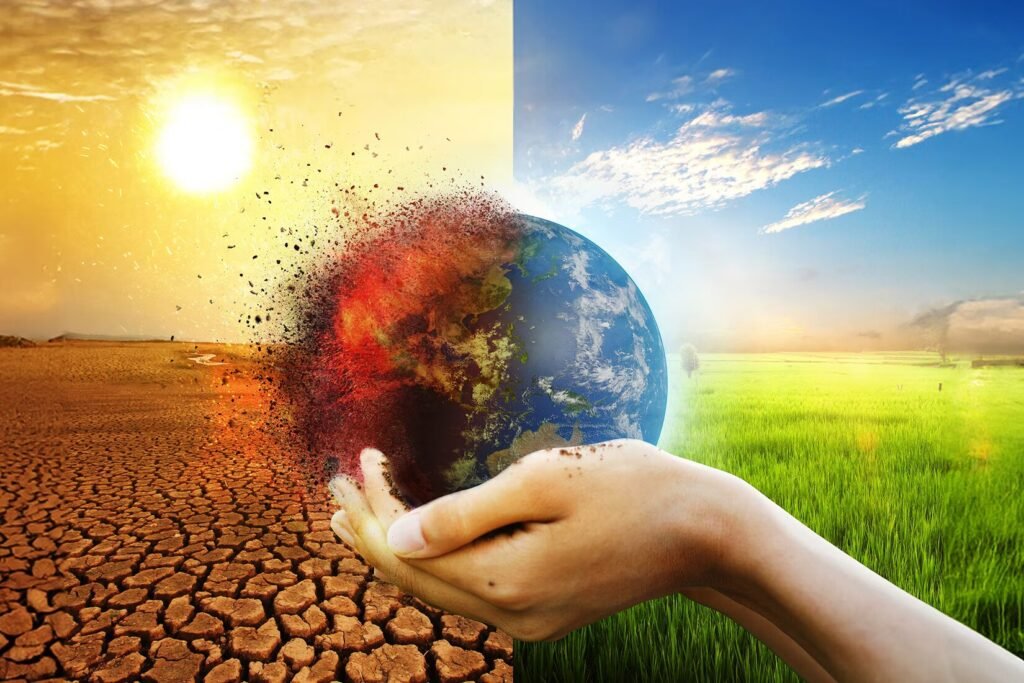“Comprehensive Strategies for Environmental Conservation and Sustainability”

Let’s delve deeper into each of these strategies for saving the environment:
- Reduce, Reuse, Recycle:
- Reduce: Beyond just minimizing waste, reducing consumption involves being mindful of the resources and materials we use in our daily lives. This means opting for products with minimal packaging, buying in bulk to reduce packaging waste, and choosing durable goods that last longer.
- Reuse: Reusing items not only saves money but also reduces the demand for new products, thereby conserving resources and reducing waste. Get creative with reusing items around your home: repurpose old containers for storage, use old clothes as cleaning rags, or donate unwanted items to others who can use them.
- Recycle: Recycling is the process of converting waste materials into new products. It’s important to know what can and cannot be recycled in your area and to properly sort recyclables. Recycling conserves energy and resources, reduces landfill waste, and helps mitigate pollution.
- Conserve Energy:
- Energy-Efficient Appliances: Energy-efficient appliances use less energy to perform the same tasks as standard appliances, resulting in lower energy bills and reduced environmental impact. Look for appliances with high ENERGY STAR ratings, which indicate superior energy efficiency.
- Behavioral Changes: Simple changes in behavior can lead to significant energy savings. Turn off lights when leaving a room, use natural light whenever possible, and adjust thermostats to conserve energy when heating or cooling your home.
- Home Improvements: Invest in energy-efficient upgrades for your home, such as installing programmable thermostats, improving insulation, sealing air leaks, and replacing incandescent light bulbs with LEDs.
- Save Water:
- Conservation Practices: In addition to fixing leaks and taking shorter showers, there are other ways to conserve water in your daily routine. For example, collect rainwater for outdoor irrigation, use a broom instead of a hose to clean outdoor surfaces, and water plants early in the morning or late in the evening to minimize evaporation.
- Water-Efficient Fixtures: Installing water-saving fixtures such as low-flow toilets, aerated faucets, and efficient showerheads can significantly reduce water usage without sacrificing performance.
- Xeriscaping: Xeriscaping is a landscaping technique that uses drought-tolerant plants and efficient irrigation practices to conserve water in landscaping. By designing your outdoor space with water efficiency in mind, you can reduce the need for irrigation and minimize water waste.
- Use Sustainable Transportation:
- Active Transportation: Walking and biking are not only environmentally friendly modes of transportation but also promote physical activity and improve overall health. Consider walking or biking for short trips instead of driving.
- Public Transit: Public transportation systems such as buses, trains, and subways are more energy-efficient than individual cars and can help reduce traffic congestion and air pollution. Whenever possible, opt for public transit to get around.
- Electric Vehicles: If you need to drive, consider switching to an electric vehicle (EV) or a hybrid vehicle to reduce greenhouse gas emissions and dependence on fossil fuels.
- Support Renewable Energy:
- Solar Power: Solar panels convert sunlight into electricity, providing a clean and renewable source of energy for homes, businesses, and communities. Installing solar panels on your property can reduce your carbon footprint and lower your electricity bills over time.
- Wind Power: Wind turbines harness the kinetic energy of the wind to generate electricity. Wind power is a rapidly growing renewable energy source that can help reduce greenhouse gas emissions and dependence on fossil fuels.
- Hydroelectric Power: Hydroelectric power plants generate electricity by harnessing the energy of flowing water. While large-scale hydroelectric projects can have significant environmental impacts, small-scale hydroelectric systems and run-of-river projects can provide clean energy with minimal environmental impact.
- Plant Trees:
- Carbon Sequestration: Trees absorb carbon dioxide from the atmosphere and store carbon in their biomass, making them valuable tools for mitigating climate change. By planting trees and preserving existing forests, we can help offset carbon emissions and reduce the concentration of greenhouse gases in the atmosphere.
- Biodiversity Conservation: Trees provide habitat and food for a wide variety of plant and animal species, contributing to biodiversity conservation. By planting native trees and restoring natural habitats, we can support biodiversity and ecosystem health.
- Ecosystem Services: Trees provide a wide range of ecosystem services, including regulating the water cycle, preventing soil erosion, and improving air and water quality. By planting trees strategically, we can enhance ecosystem resilience and support human well-being.
- Reduce Meat Consumption:
- Environmental Impact: The production of meat and animal products is resource-intensive and contributes to deforestation, habitat destruction, water pollution, and greenhouse gas emissions. By reducing meat consumption or transitioning to a plant-based diet, individuals can minimize their environmental footprint and promote sustainability.
- Health Benefits: Plant-based diets have been linked to numerous health benefits, including reduced risk of chronic diseases such as heart disease, diabetes, and certain types of cancer. By adopting a plant-based diet, individuals can improve their health while also reducing their environmental impact.
- Ethical Considerations: In addition to environmental and health considerations, many people choose to reduce meat consumption for ethical reasons, such as concerns about animal welfare and the treatment of animals in industrial farming operations.
- Support Conservation Efforts:
- Habitat Protection: Conservation organizations work to protect and preserve natural habitats and wildlife by acquiring and managing land, implementing conservation easements, and advocating for policies that support habitat protection.
- Species Conservation: Endangered species conservation efforts focus on protecting and restoring populations of endangered and threatened species through habitat restoration, captive breeding programs, reintroduction efforts, and other conservation strategies.
- Community Engagement: Conservation organizations engage local communities in conservation efforts through education, outreach, and community-based conservation programs. By involving local stakeholders in conservation initiatives, organizations can build support for conservation efforts and foster a sense of stewardship for the environment.
- Educate Yourself and Others:
- Environmental Literacy: Environmental education plays a crucial role in raising awareness about environmental issues, fostering a sense of environmental stewardship, and empowering individuals to take action to protect the environment.
- Lifelong Learning: Environmental education is not just for students—it’s a lifelong process of learning and engagement. Stay informed about environmental issues through books, articles, documentaries, and online resources, and seek out opportunities to deepen your understanding of environmental science, policy, and activism.
- Community Engagement: Share your knowledge and passion for the environment with others in your community through educational workshops, community events, and outreach activities. By working together to raise awareness and promote environmental literacy, we can inspire collective action to address environmental challenges.
- Advocate for Policy Change:
- Political Engagement: Political advocacy is an essential tool for driving systemic change and advancing environmental protection at the local, national, and global levels. Get involved in advocacy campaigns, contact your elected representatives, and participate in grassroots organizing efforts to advocate for policies that promote sustainability, conservation, and environmental justice.
- Policy Priorities: Advocate for policies that address key environmental issues such as climate change, biodiversity loss, pollution, and resource depletion. Support initiatives to transition to renewable energy, protect natural habitats, conserve water resources, and reduce greenhouse gas emissions.
- Coalition Building: Build coalitions with like-minded individuals and organizations to amplify your impact and mobilize support for environmental policy initiatives. By working together to advocate for policy change, we can create a more sustainable and equitable future for all.
By implementing these strategies and advocating for broader systemic change, we can work together to protect and preserve the environment for current and future generations.



